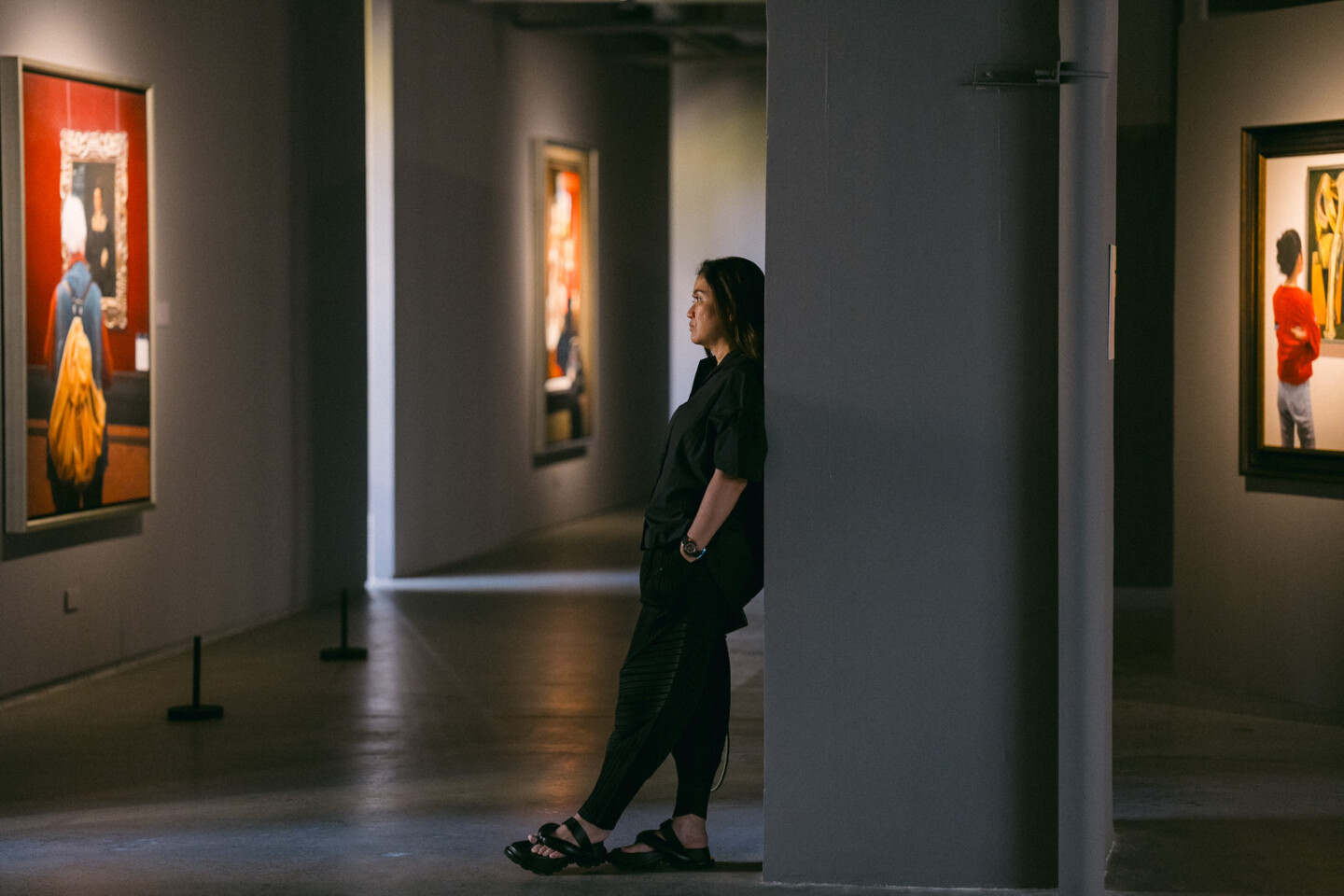
With works involving people viewing art, Annie Cabigting has always acknowledged the importance that the audience plays in art. So much so that most of her works involve people viewing art. To her, without the artist, there is no artwork; but without the audience, the artwork does not matter for it’s the audience’s role to appreciate the work. Without them, an object is just an object. Thus, a symbiotic relationship exists between the art, artist, and the audience.
We sat down with Annie Cabigting, a Filipino artist who splits her time between Philippines and Bangladesh, for a discussion where she emphasized this theme over and over: how the viewer is important to art and how she shares her experience to her viewers.
“What you see is what it is” is the best way to describe her work. Annie approaches her art in a straightforward way—even sharing that she does not have a creative process when she makes art. “Mine is very organic. I don’t sit down and think of what to do. It happens when I’m walking; it happens [with] just a spark of an idea so there’s no [method].”
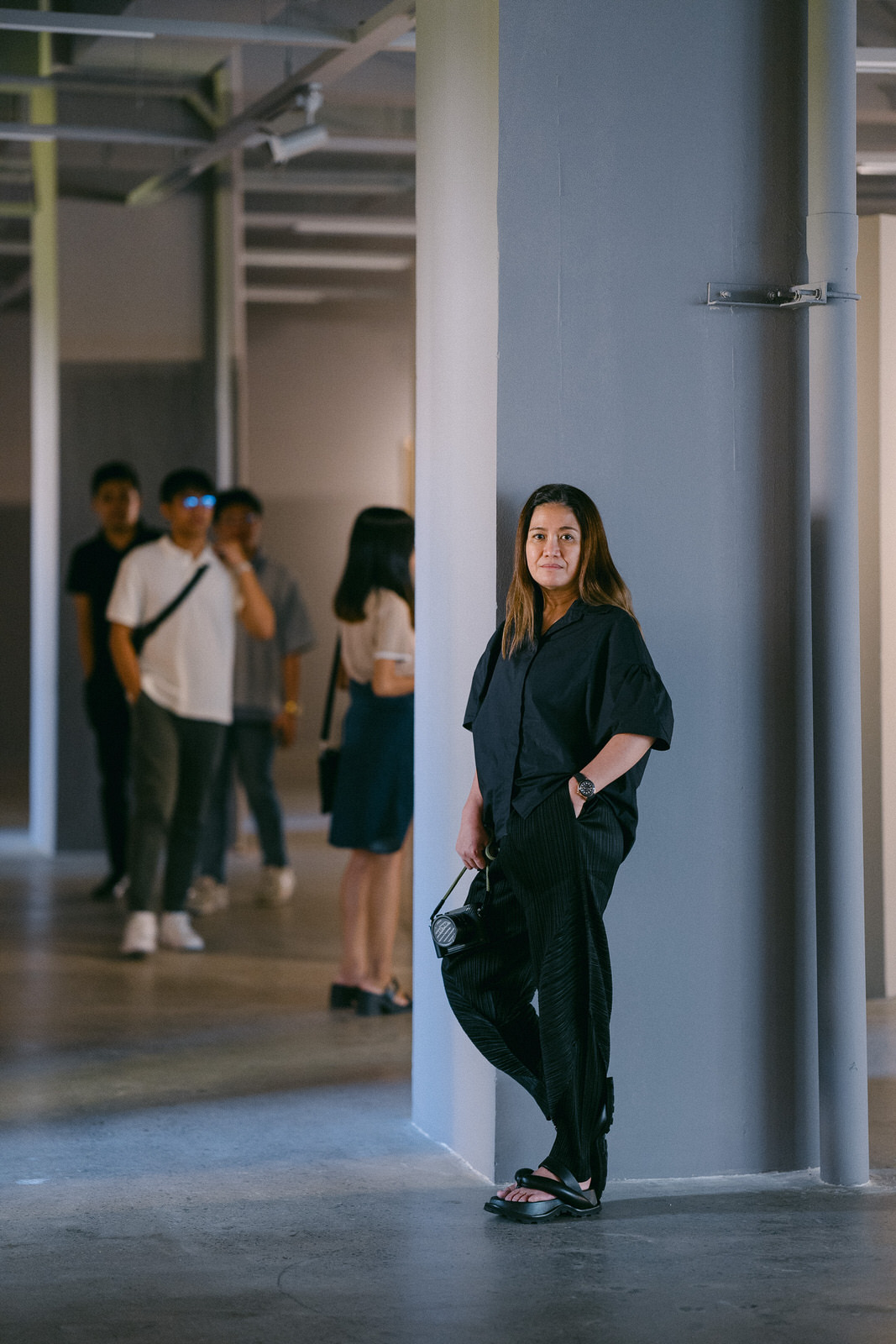
Her approach is also instinctual. “The deep part of the process is when I conceptualize the show, but when I choose the pieces, it’s more instinctual…Usually I choose the pieces by thinking of where I’m going to show so knowing the space that I’m going to show is part of the work.”
Asked about how she explains her artworks to other people, Annie’s response is simple: she would never describe her work. “You can’t describe a work, they must experience it…Art must be experienced, the same way art must be viewed.”
“If I do have to explain it, I would say photorealist…I would usually open my phone then show [to people]. They’ll usually say, ‘Oh! the person is part of the work,’ and I’ll say yes. The audience is an integral part of how we view any work of art. There is a symbiosis of what is art. If there’s no audience, it’s just another decor on the wall.”
Looking at her work in person, a common theme is other artists’ works. Annie shares it’s a tribute to art as the subject of her work is art. As a viewer looking at her work, there are things that can be researched related to art. That is precisely her intention. “It’s like continuing the baton of whoever the artist is. Because a lot [of artists], I think were just not highlighted. It’s forgotten or buried in the annals of history.”
“[She is] the writer, the critic, the audience. All in one person. That’s what we are. We are important in appreciating the work.”
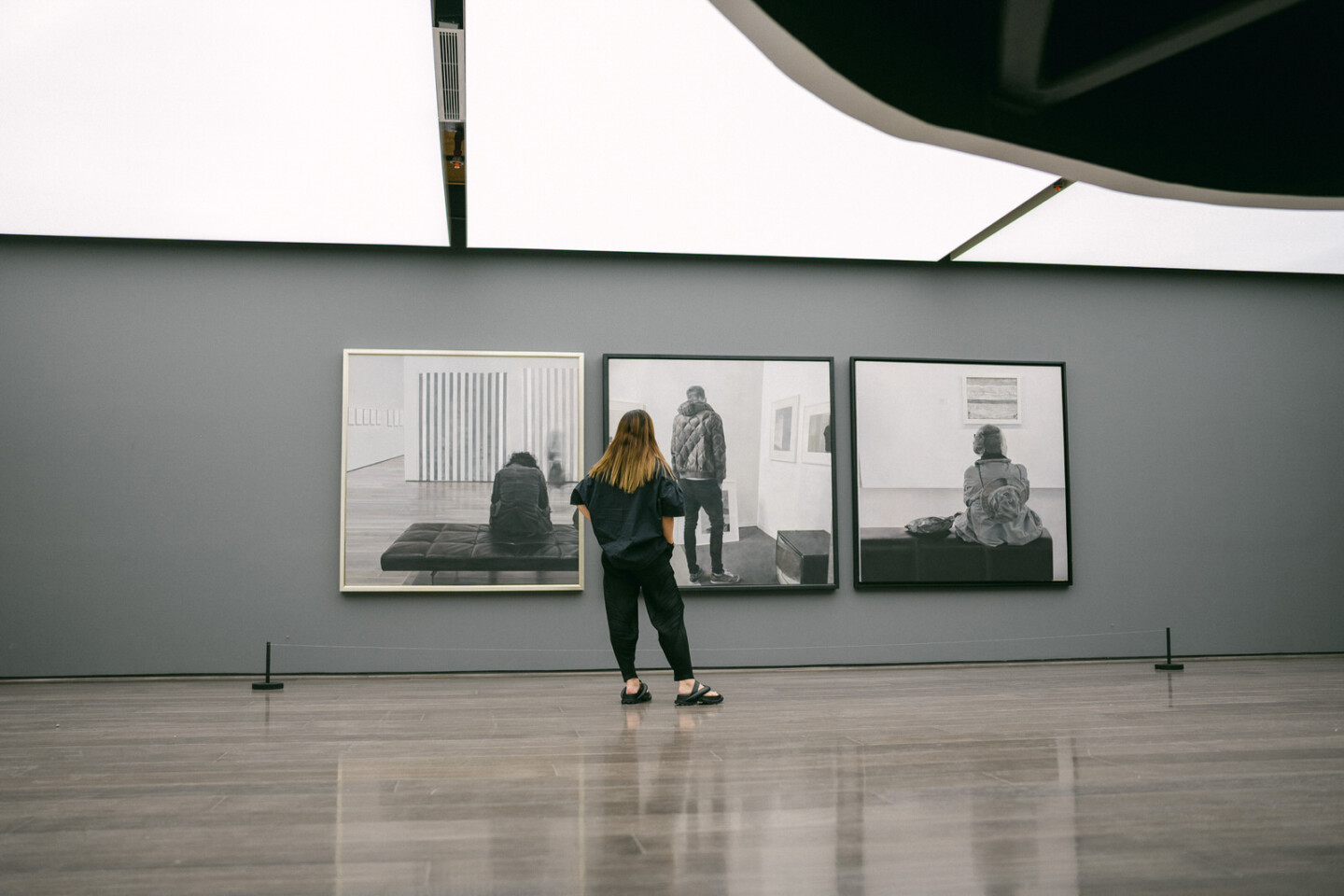
The start of her interest with the viewer
Annie’s interest with the relationship between the artwork and the viewer began when she came across Roberto Chabet’s work in CCP. During the 60s and 70s, Chabet had an artwork wherein he tore up a book of Contemporary Philippine Art By Manuel D. Duldulao. He placed some of the torn papers in the trashcan and scattered the others. Annie said that when people saw the trashcan and the torn-up book inside, they thought that it was a regular trash bin. They even threw trash in it.
There was an image taken during Chabet’s CCP show. It was a picture of a woman–who happens to be a writer–looking down at the torn Duldulao book. Annie explains “No one is paying attention to the work except her. [She is] the writer, the critic, the audience. All in one person. That’s what we are. We are important in appreciating the work.”
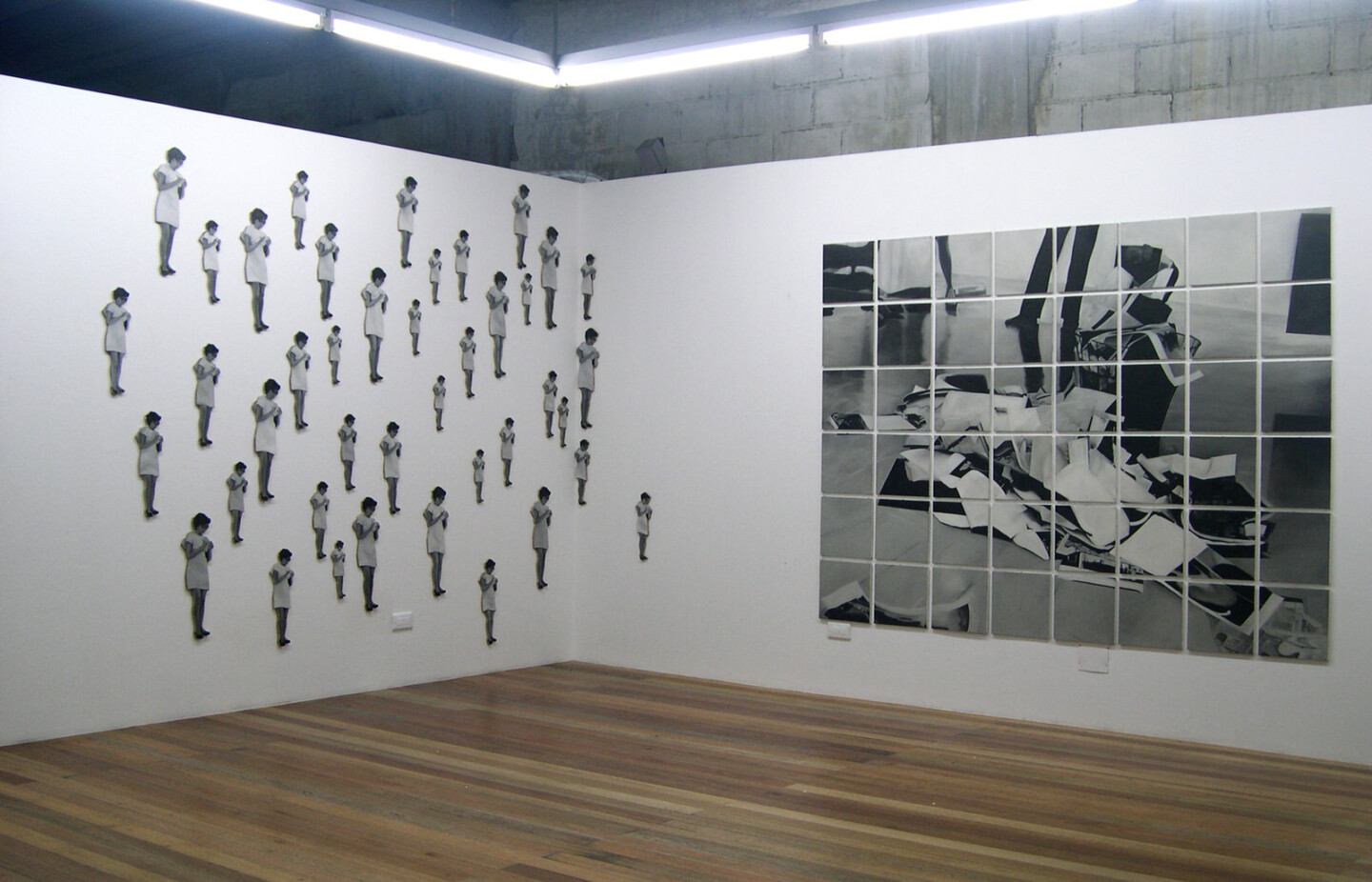
‘100 Pieces’ by Annie Cabigting at Finale Art File, 2005
To Annie, the audience is important in art, and she approached her first solo show with this in mind. She said “I multiplied her [the woman looking down at the torn Duldulao book] because she represents all of us.” Annie made a close-up of the image, and deconstructed the image into squares and placed the deconstructed images beside each other, to make the image whole again.“By deconstructing you are also highlighting the image,” she explained.
Her whole show was one artwork but separate pieces. Annie points at one work which was painted two or three times. The artwork had images or canvases layered on top of the other. When asked why it was that way, she shares, “I’m multiplying it. It’s a Duldulao book that was ripped.” Annie mentioned that the next time Duldulao printed the new issue of Contemporary Philippine Art, he included the image of the book torn by Chabet. “Imagine that [the] actual publisher printed this image of the book being torn, and then years later, here I am painting it…it’s the same image but it has become different.”
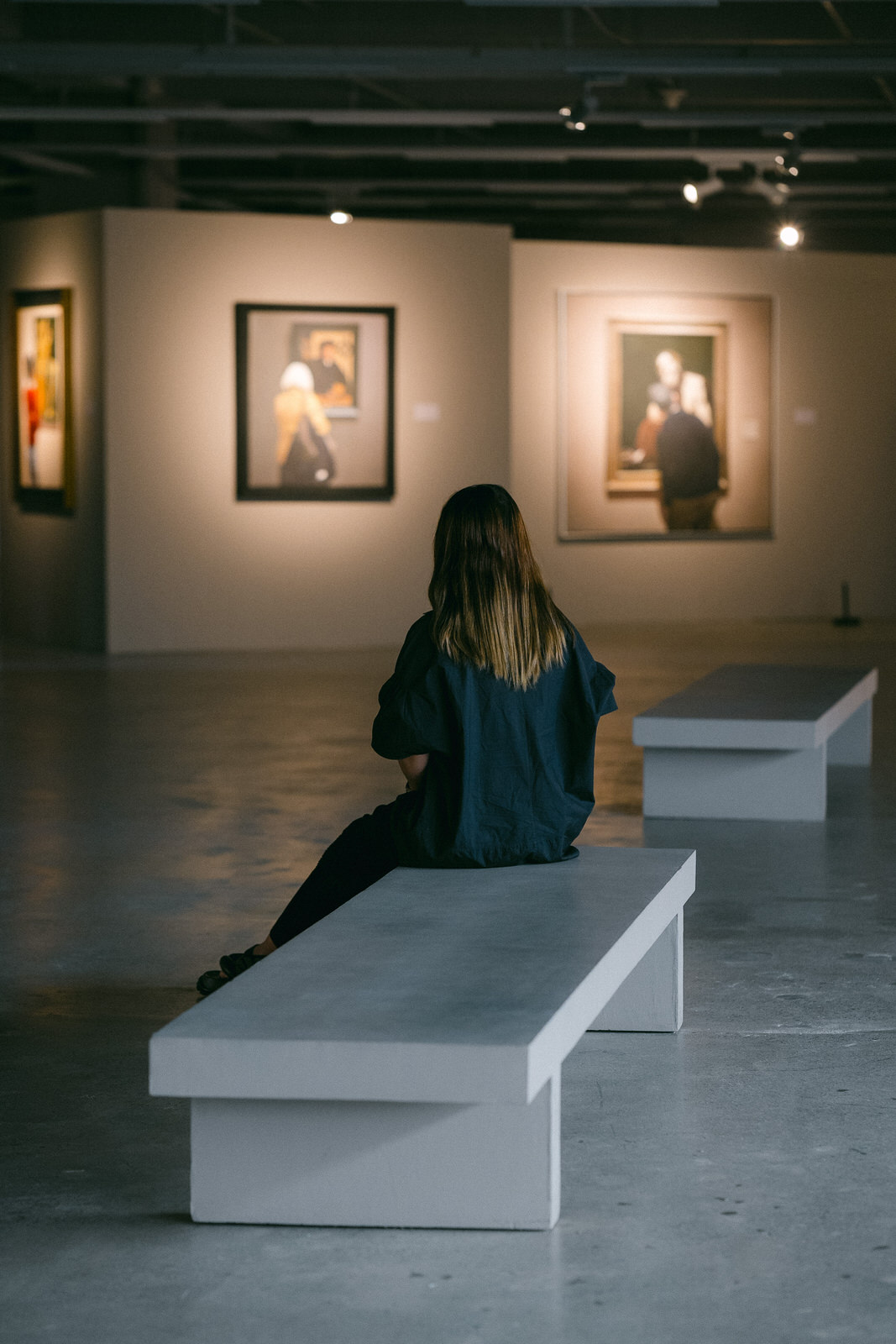
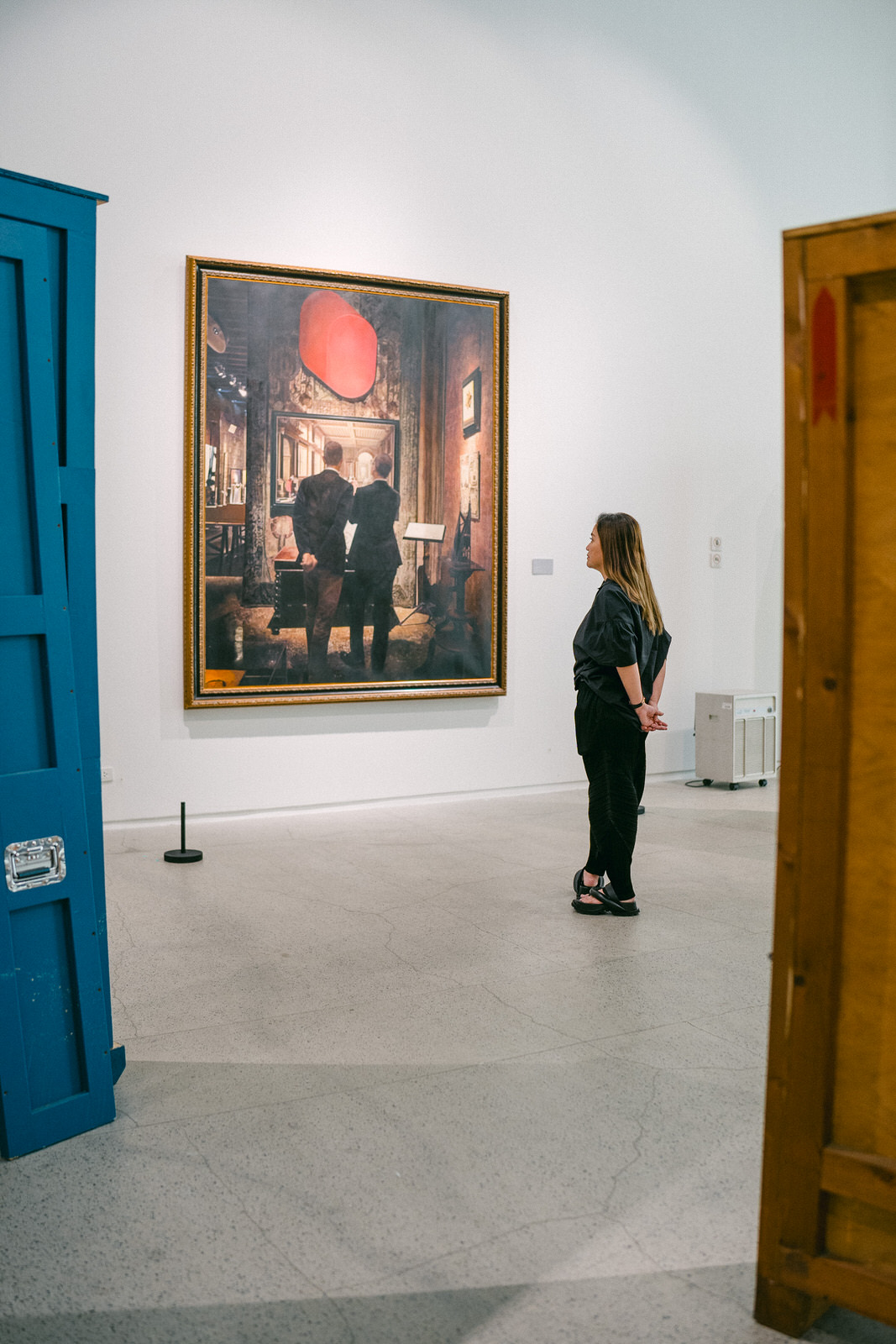
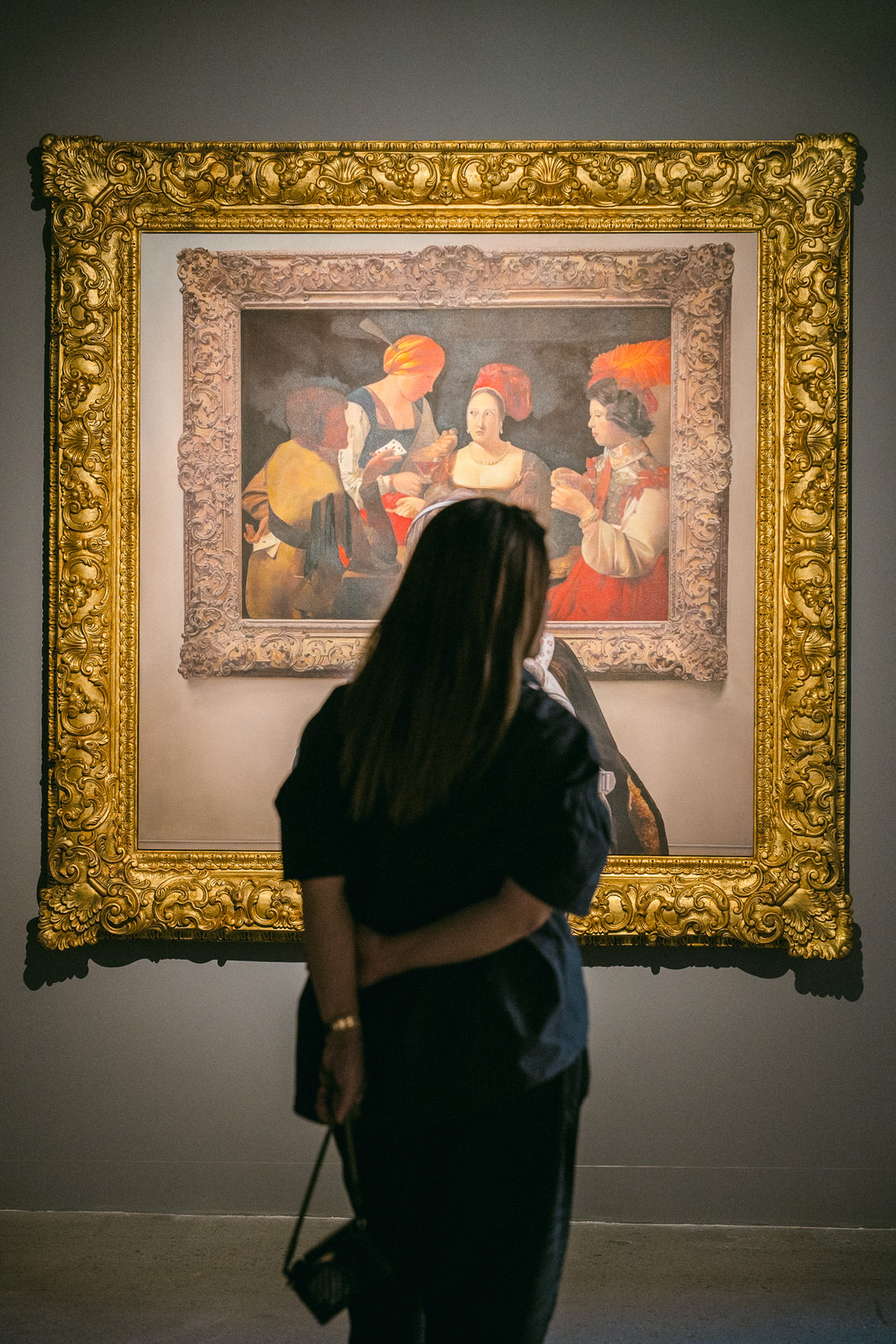
Annie wants to share an experience to her viewers
To her, experience is not only important while making art, but when viewers look at it as well. When people visit Annie’s exhibitions, they see how she transforms the venue. The space where they hang her paintings is part of the experience. Annie shares that in a way she’s building a space for the audience to be in–with the audience being part of the work.
“That’s why I made a museum piece because it was also a social experiment of mine. It was not just a show about paintings. It was an installation. Once people enter those curtains, I like to wonder what their behavior would be. Imagine outside there was a party, there was a rock band, and then the minute they entered the space, they were more behaved, and their voices were lower.”
In recent exhibitions, she hid artworks from its viewers. She wrapped them or placed them inside crates. “My intention was to give people a different way of looking–with your mind and your imagination.” She wrapped her work with the original intention to make a commentary on people buying works. “Another was I’m not just giving you one work. I’m giving you…a thousand images that might make you wonder. Now you’re not just experiencing work visually; you’re experiencing it in a different way. Now you tap on your emotions and imagination. I’m forcing you to imagine.”
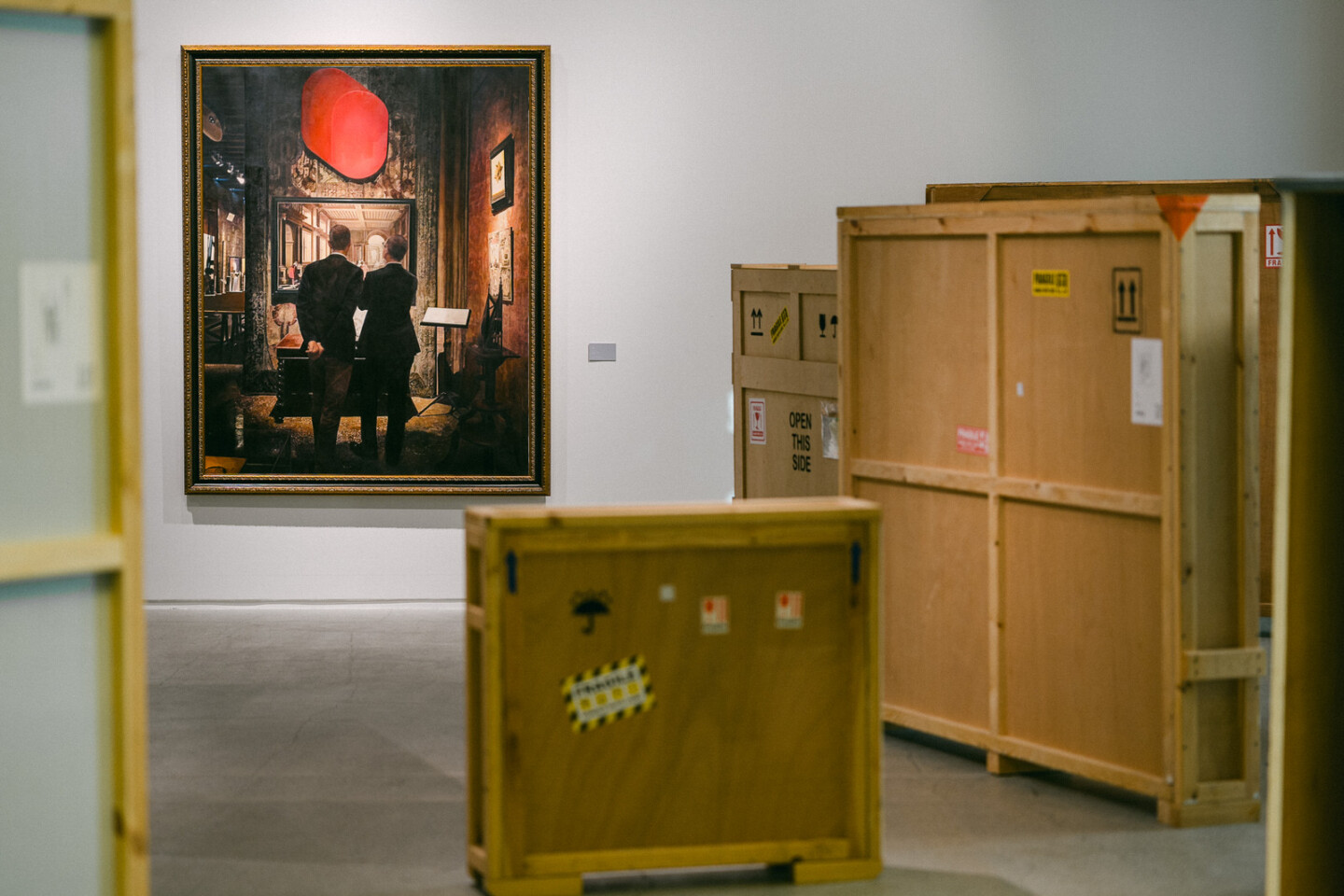
“You don’t see the work so you wonder what’s inside, right? It’s in your house and your relationship with the work is not just fleeting. It’s more than just saying, ‘Ah it’s pretty.’ It makes you think, “I wonder what’s inside?”
She first started this practice during an exhibition with Silverlens. It was a commentary on how people were buying works without even seeing it yet. People just bought it because it was associated with an artist and a name. It was rampant in different shows. Annie told Isa Lorenzo “I have an idea. I’m going to make 10 paintings. I’m going to wrap them up. They are never to be seen. Collectors are buying works. They don’t even see the work and they’re buying it.” Isa agreed. When the collectors went to the show, they were surprised that the paintings were wrapped. They had never seen the work before. The wrapping was part of the artwork. If someone unwraps it, the artwork is destroyed.
She shared that she did not give only one artwork, but she gave them a multitude of ideas or imaginations. She wanted them to experience, not just because they bought the work without seeing it, but she intended a deeper meaning. “You don’t see the work so you wonder what’s inside, right? It’s in your house and your relationship with the work is not just fleeting. It’s more than just saying, ‘Ah it’s pretty.’ It makes you think, “I wonder what’s inside?”
In Annie’s recent show, In Storage, she continues her installation work from Silverlens. She placed paintings in crates, and viewers could only imagine what’s inside by just her scribble. After the pandemic, she converted the Finale Art File back into its original state. She placed the paintings in crates.
“People are so spoiled with our [gadgets]. It’s there in our face. It’s there and it’s fast. Our consumption of images, of anything.” She felt art fatigued. She made 12 paintings and thought, “Maybe people don’t have to see the work. Maybe they can use their imagination.” By placing them in crates, she wanted to highlight the idea or fact that during the pandemic, a lot of artworks were disappearing from public spaces. They end up stored in freeports. It was another commentary from her.
She shares the only time a regular person can see these pieces, even hers, is during their short time in the gallery. After that, they are gone. They go into houses. “In a way, if you think of it in a metaphor, houses are also like boxes. It goes into that box, and the public will never see it, unless you’re a friend of the owner.”
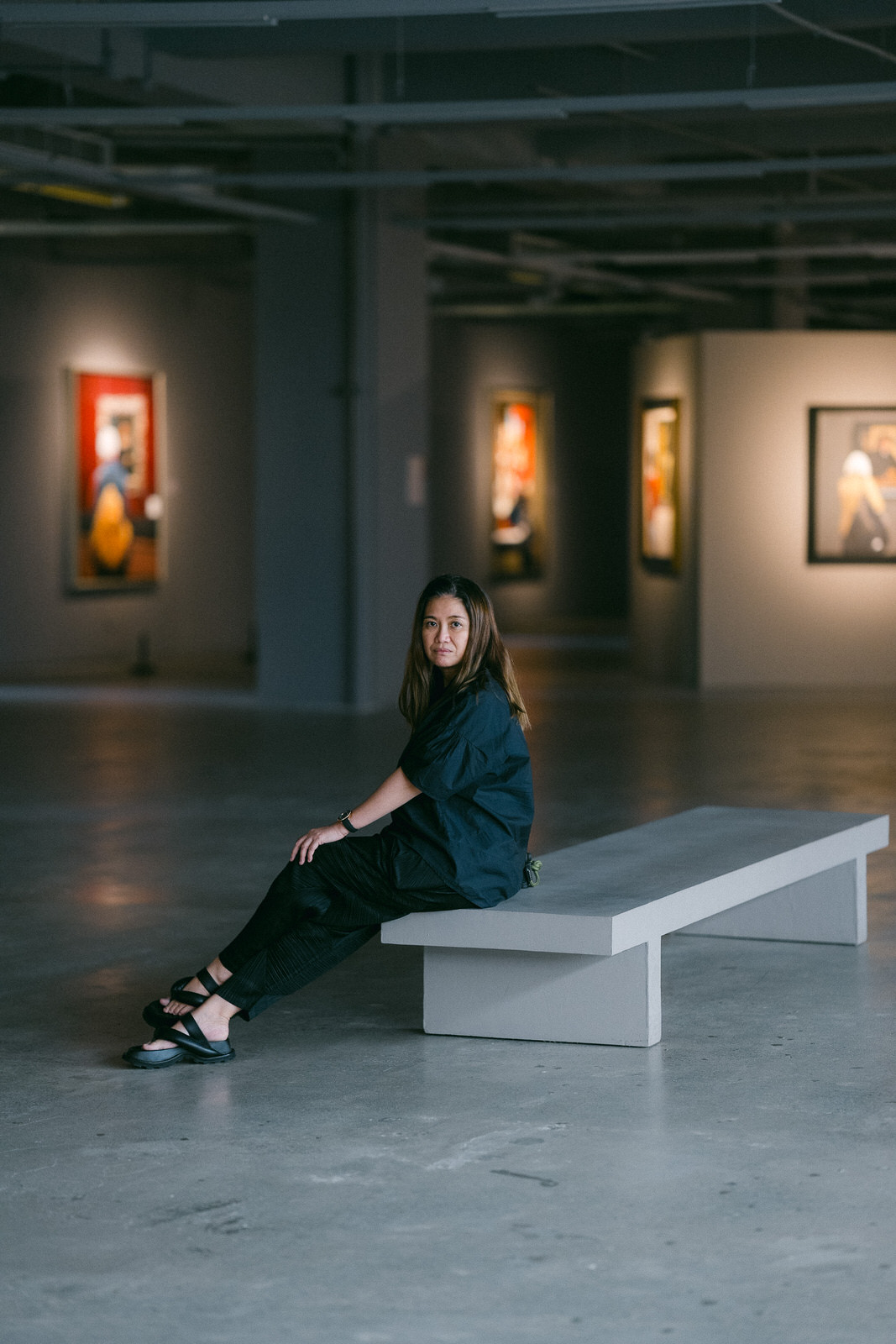
‘When we look at art…’ by Annie Cabigting at Metropolitan Museum of Manila
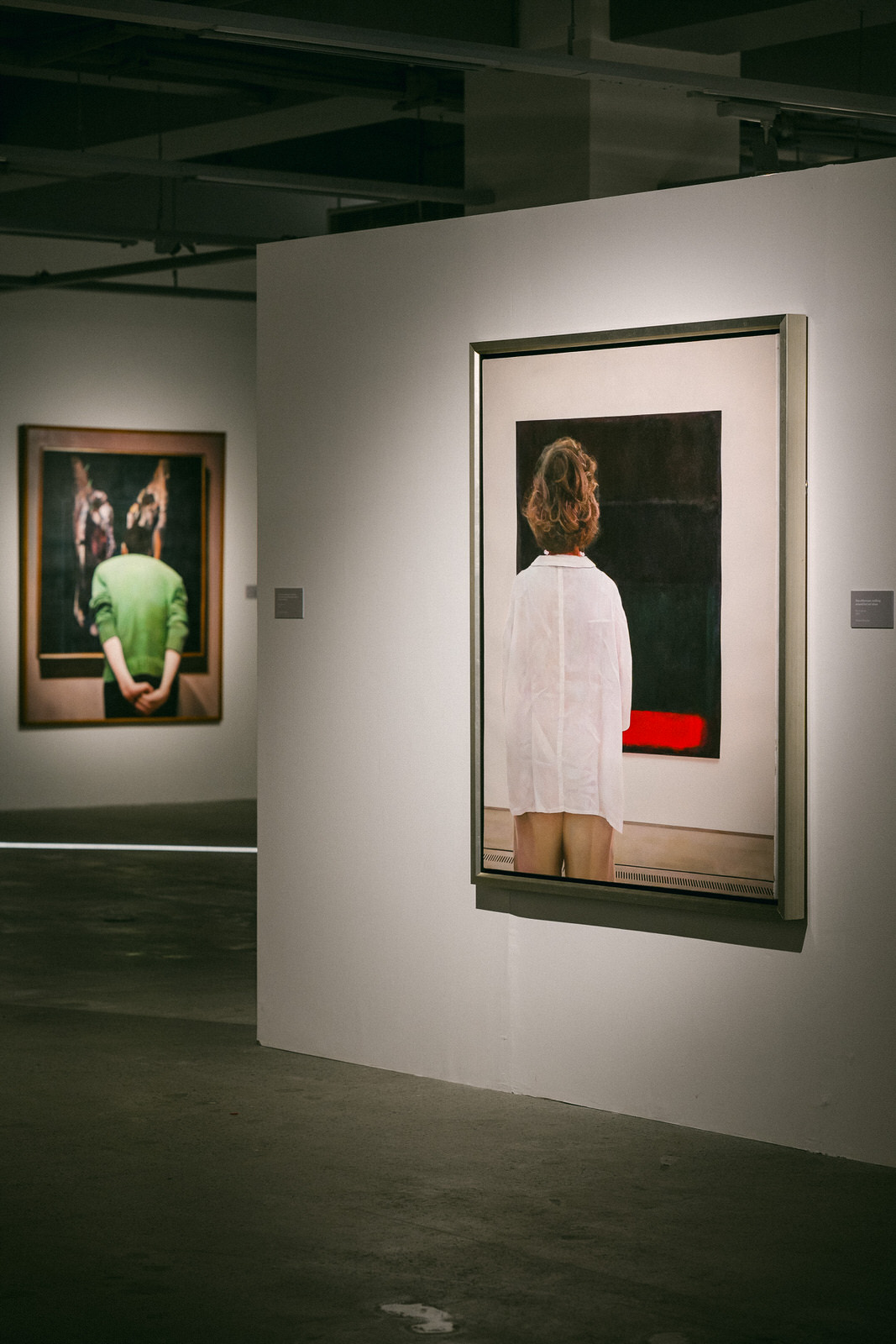

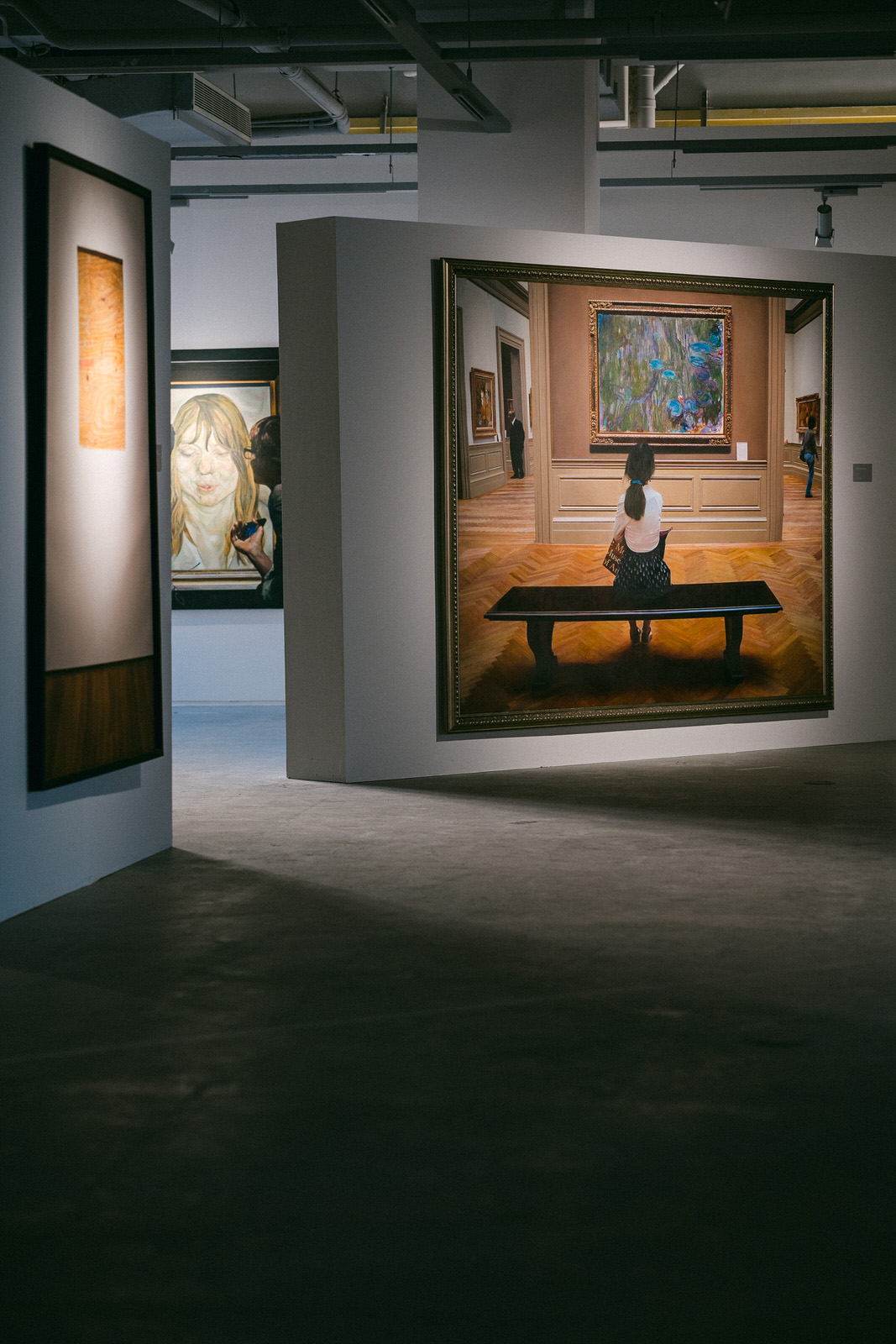
CREDITS
WRITER Mica Sarenas
PHOTOGRAPHER Zaldine Alvaro
EDITOR Tricia Quintero
DESIGN Marvin Conanan
SUPPORT PURVEYR
If you like this story and would love to read more like it, we hope you can support us for as low as ₱100. This will help us continue what we do and feature more stories of creative Filipinos. You can subscribe to the fund or send us a tip.




